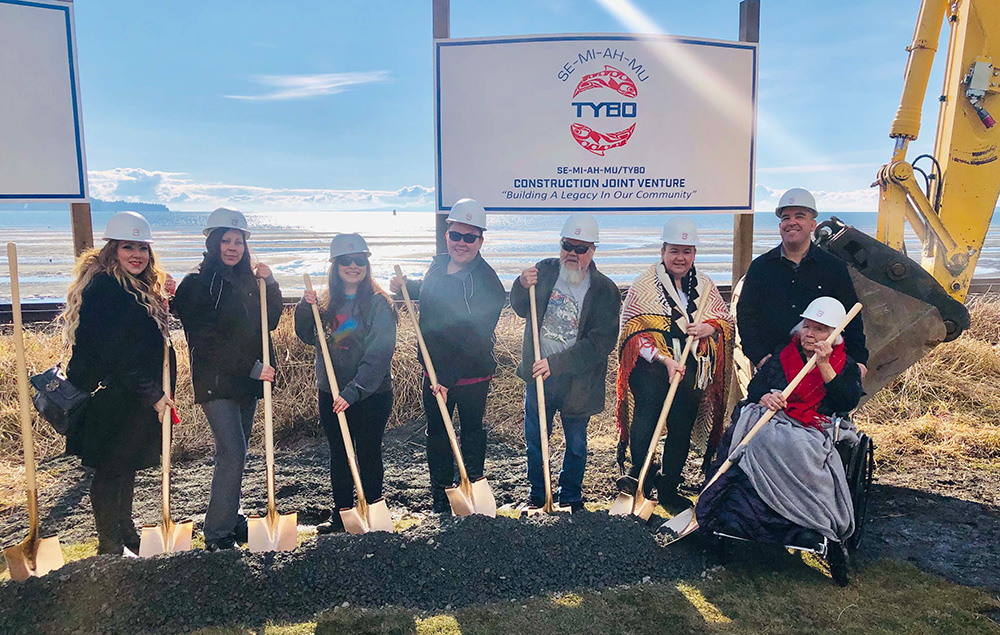Semiahmoo First Nation Coun. Joanne Charles has to keep reminding herself to use her tap water while cooking.
After 16 years of living under a boil water advisory, Charles says it’s automatic to use water from the cooler in her kitchen. But that’s a habit she’s working to change.
On Wednesday the Semiahmoo First Nation, between White Rock and the U.S. border, lifted British Columbia’s longest drinking water advisory, which has been in place since 2005.
Access to clean drinking water is a complex issue, but fundamentally it’s about health, Charles says.
“It’s a serious thing to be on a drinking water advisory. It weighs on a community, but I feel light today because I feel like this weight has been lifted,” says Charles, who is also the Semiahmoo First Nation band manager and a small water and wastewater system operator.
The clean water is thanks in part to new infrastructure and a new water source, won after three decades of fighting for access to clean drinking water, Charles says. Tap water is now sourced from Metro Vancouver and travels through 12 kilometres of new pipes and three pump stations to reach the community’s 31 homes and six administrative buildings.
The struggle for water started in 1991 when the community’s water distribution system aged out and needed to be replaced, Charles says.
In the ’90s the nation purchased water from the privately owned White Rock Utilities. The first drinking water advisory was issued in 1996. In October 2005, the nation was placed on a permanent boil water advisory when its water found E. coli and total coliforms, which Canada measures to test if water is drinkable, exceeded allowable levels.
In 2007, the community built a chlorine station, which added chlorine to the water distribution system as a temporary measure. Many households had to start bringing in water or used shallow wells. Families would order five large water jugs at a time and go through two to three per week, Charles says.
“When you’re on a long-term boil water advisory, you’re already in an emergency situation,” she says.
Eleven years into the drinking water advisory, the City of White Rock gave the nation notice that it would stop supplying water. That left the community with two years, until December 2018, to figure out new water and sewer sources, Charles says. The community later heard the municipality’s water and sewer systems were at capacity.
That kicked off talks with the City of Surrey, the nation’s other neighbour, to connect to Metro Vancouver’s water and sewage systems. The nation also approached Indigenous Services Canada for funding to construct a new water distribution system, sanitary sewage system and fire protection lines.
"We’ve done a lot of work to get all the pipes in the ground, agreements signed, houses connected, and tests completed,” Charles says.
Construction for the new system started in 2018 but was stalled twice — first due to winter conditions and then because of COVID-19.
In December, the nation celebrated when Metro Vancouver water lines made it to the community. Since then, the residences and administration buildings have been connected to the new distribution system and have passed the required water quality tests.
But the work isn’t done quite yet. Homes still need to be switched from septic tanks to the new sewage system and connected to Metro Vancouver’s sewage, a project that should wrap up by mid-summer, Charles says.
Prime Minister Justin Trudeau pledged to end all boil-water advisories on First Nations reserves within five years during the 2015 election campaign. Since then, the federal government says it has invested $3.69 billion in clean water and lifted 105 long-term drinking water advisories, including all 20 in B.C.
But 34 communities still have 54 long-term drinking water advisories. A recent investigation by Concordia University’s Institute for Investigative Journalism also found 35 First Nations schools had lead in their water and that the government doesn’t track water-related illnesses in First Nations.
“Water is life, and without it we all suffer,” Charles says. “Not having potable drinking water in a community can weigh on a community from a mental health perspective as well as health and well-being.”
The federal government needs to work with First Nations to end drinking water advisories, Charles says. That includes funding infrastructure and training and hiring workers as water quality monitors and small water and small wastewater systems operators.
Without water, communities dry up. When environmental or industrial disasters hit communities without alternative water sources, some have to evacuate their homes and communities, she adds. ![]()
Read more: Indigenous, Health, Urban Planning + Architecture
















Tyee Commenting Guidelines
Comments that violate guidelines risk being deleted, and violations may result in a temporary or permanent user ban. Maintain the spirit of good conversation to stay in the discussion.
*Please note The Tyee is not a forum for spreading misinformation about COVID-19, denying its existence or minimizing its risk to public health.
Do:
Do not: